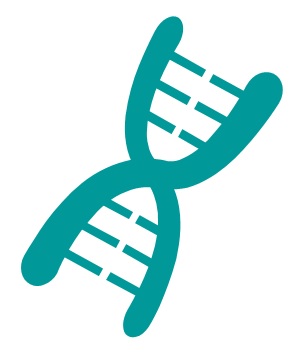Human MOG (35-55) peptide
MOG (35-55) human – MEVGWYRPPFSRVVHLYRNGK
MOG 35-55 human is a fragment of the human protein MOG (Myelin Oligodendrocyte Glycoprotein – UniProtKB – Q16653),a minor constituent of the myelin sheath. The main role of MOG is to surround neurons and axon to provide efficient action on the potential electrical conduction.
EAE in mouse induced by MOG 35-55 human
The fragment 35-55 from MOG protein is able to induce a model of demyelinating of the myelin sheath : EAE (Experimental autoimmune encephalomyelitis). Induction of EAE will lead to a production of polyclonal anti-MOG 35-55 antibodies and an extensive B cell reactivity against the myelin. Widespread autoimmune response damages the myelin sheath and lead to the Multiple Sclerosis model.
Comparison with the rodent MOG 35-55
Mouse and human MOG35-55 (mouse MOG35-55,reference SB023) differ at position 8 with respectivelly a serine and a proline. This difference attenuates the encephalitogenicity of the human MOG35-55. However,human MOG 35-55 was immunogenic,inducing proliferation and IFN-γ and IL-3 in humans,but not rodents MOG35-55.
Nevertheless,when treated by human MOG35-55,rodents are affected by EAE,which means that there are two mechanisms. One mechanism with an encephalitogenic T-cell response to rodent MOG 35-55 and one with an encephalitogenic B-cell response to human MOG epitopes that most likely cross-react with the mouse determinants.
 Click here to discover SB-PEPTIDE’s Human MOG peptides pool for T-cells activation
Click here to discover SB-PEPTIDE’s Human MOG peptides pool for T-cells activation
Technical specification
 |
Sequence : MEVGWYRPPFSRVVHLYRNGK – Purity : > 95% |
 |
MW : 2591.99 g / mol (C120H179N35O28S) |
 |
For research use |
 |
Counter-Ion : TFA Salts (see option TFA removal) |
 |
Delivery format : Freeze dried in polypropylene 2mL microtubes |
 |
Other names : Myelin Oligodendrocyte Glicoprotein (35-55) |
 |
Peptide Solubility Guideline |
 |
Bulk peptide quantities available |
Price
| Product catalog | Size | Price € |
Price $ USD |
| SB138-1MG | 1 mg | 110 | 138 |
| SB138-5MG | 5 mg | 385 | 481 |
References
J. Neurol. Sci. 2014 Dec 15;347(1-2):78-81. doi: 10.1016/j.jns.2014.09.023. Epub 2014 Sep 22.
Evaluation of the humoral response against mycobacterial peptides,homologous to MOG₃₅₋₅₅,in multiple sclerosis patients
Bacillus Calmette-Guérin (BCG) and Mycobacterium avium subspecies paratuberculosis (MAP) have been associated with multiple sclerosis (MS). Clinical data indicates that BCG vaccination exerts anti-inflammatory effects in MS; conversely,MAP is thought to be one of the possible infectious factors responsible of MS through a molecular mimicry mechanism. A peptide-based indirect ELISA was used to detect antibodies against the encephalitogenic myelin oligodendrocyte glycoprotein (MOG)35-55 epitope,and two mycobacterial peptides sharing sequence homology with the latter: MAP_2619c352-361/BCG_1224355-364 and BCG_3329c64-74. Among 40 MS patients and 39 healthy volunteers included in the study,only MOG35-55 was capable of inducing a significantly higher humoral response in MS subjects compared to controls. Indeed,11 out of 40 MS subjects (27.5%) and only 2 out of 39 controls (5%) were antibody-positive for MOG35-55 (p=0.01,AUC=0.65). These findings strengthen the importance of MOG35-55 in MS pathogenesis. The MAP and BCG MOG-homologues epitopes investigated were not recognized in MS patients. Overall,the results allow us concluding that sharing homology of linear epitopes is necessary but not sufficient to induce antibody-mediated cross-reactivity.
J. Immunol. 2003 Jul 1;171(1):462-8. doi: 10.4049/jimmunol.171.1.462.
Rat and Human Myelin Oligodendrocyte Glycoproteins Induce Experimental Autoimmune Encephalomyelitis by Different Mechanisms in C57BL/6 Mice
C57BL/6 mice immunized with the extracellular Ig-like domain of rat myelin oligodendrocyte glycoprotein (MOG) developed experimental autoimmune encephalomyelitis (EAE) resembling that induced by rodent MOG 35-55 in its B cell independence and predominantly mononuclear CNS infiltrate. In contrast,human MOG protein-induced EAE was B cell dependent with polymorphonuclear leukocytes. Human MOG differs from rat MOG at several residues,including a proline for serine substitution at position 42. Human MOG 35-55 was only weakly encephalitogenic,and a proline substitution in rat MOG at position 42 severely attenuated its encephalitogenicity. However,human MOG 35-55 was immunogenic,inducing proliferation and IFN-gamma and IL-13 to human,but not rodent MOG 35-55 [corrected]. The B cell dependence of EAE induced by human MOG protein was not due to a requirement for Ag presentation by B cells,because spleen cells from B cell-deficient mice processed and presented human and rat MOG proteins to T cells. The different pathogenic mechanisms of human and rat MOG proteins might result from different Abs induced by these proteins. However,rat and human MOG proteins induced Abs to mouse MOG that were equivalent in titer and IgG subclass. These data demonstrate that EAE can be induced in C57BL/6 mice by two mechanisms,depending on the nature of the immunogen: an encephalitogenic T cell response to rat MOG or rodent MOG 35-55,or an encephalitogenic B cell response to epitopes on human MOG protein that most likely cross-react with mouse determinants.
